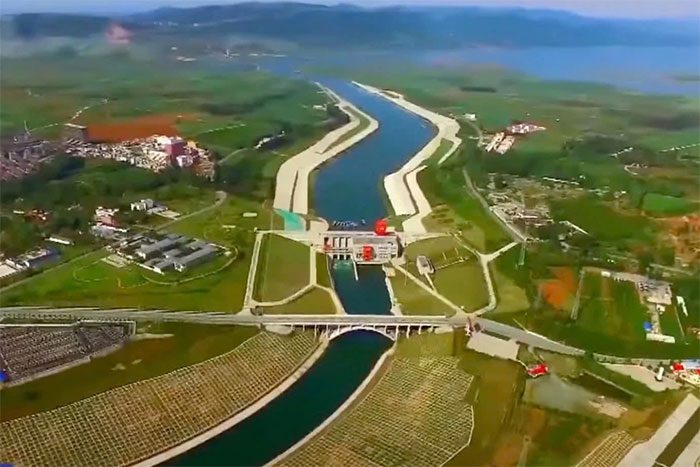China’s Artificial River Project Offers New Hope for Drought-Afflicted Developing Countries
Last year, the global weather situation experienced unpredictable upheavals, leading to severe consequences. It was a year marked by record-breaking temperatures, with extreme weather events occurring more frequently and the effects of climate change becoming increasingly evident.

A sheep that died of starvation due to prolonged drought in the area of the Ông Kinh irrigation lake, Nhơn Hải commune, Ninh Thuận province. (Photo: Hữu Khoa).
In the context of unpredictable global climate changes, a bold solution is being implemented by China, which could serve as a lesson for countries that frequently suffer from prolonged droughts, such as Vietnam.
The initiative, known as the “South-North Water Diversion Project” (SNWTP), is considered a mega project aimed at transferring 44.8 billion cubic meters of freshwater from southern China to northern provinces each year. This volume of water is double the flow of the Colorado River in the United States.
It is known that the southern regions of the country are relatively fertile and have sufficient water for agriculture. In contrast, northern provinces often endure extended drought conditions. This issue is exacerbated by the fact that one-third of China’s population resides in these arid northern basins.

China’s South-North Water Diversion Project is changing the lives of over 185 million people (Photo: CGTN).
The project is said to be inspired by a quote from Mao Zedong, who once stated: “The South has plenty of water, while the North is lacking. So if possible, why not borrow some?”
According to the description, water is transported along an artificial river with a nearly complete downstream flow through a network of artificial rivers and canals.
The network consists of three main branches, named the Western, Middle, and Eastern branches. The primary mission of these three branches is to divert water from the upper, middle, and lower reaches of the Yangtze River to the north and northwest.
China has put the Eastern and Middle branches into operation since 2013 and 2014, providing freshwater to several northern plains.
An estimated 185 million people living in dozens of cities along the two river branches have benefited from the project’s water flow. Even Beijing, a city with over 22 million residents, receives a significant amount of water through the SNWTP.
The Western branch of the artificial river is expected to be operational by the end of 2024. However, the project’s progress has raised concerns about its potential impact on millions of people in other countries, such as India.
Additionally, the project’s costs are also a barrier. According to Iflscience, the project has cost the Chinese government at least $71 billion, and this figure is expected to rise in the coming years, primarily due to maintenance and expansion costs. In 2014, the SNWTP and other water diversion projects accounted for about 1% of China’s GDP, equivalent to $150 billion.





















































